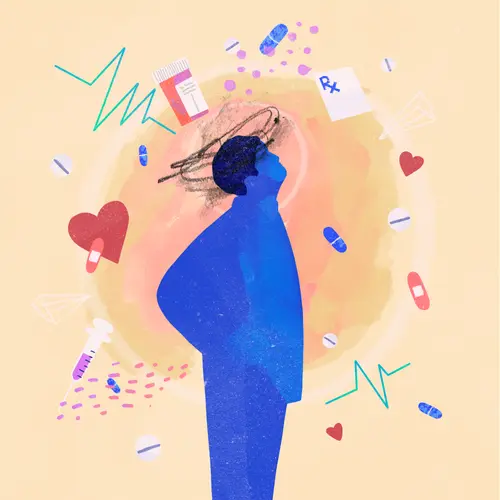Cholesterol is a fatty substance that naturally occurs in human blood. It is formed in the liver or comes from the foods you eat. Cholesterol performs important functions in your body. It aids in tissue and hormone formation. It protects your nerves. It helps with digestion. In fact, cholesterol helps form the structure of every cell in your body.
You've probably heard your doctor talk about good and bad cholesterol. It's true we need cholesterol to maintain good health. But too much LDL -- or "bad" -- cholesterol and not enough HDL -- or "good" -- cholesterol may lead to heart disease and stroke. To help avoid these problems, you need to maintain the proper ratio between good and total cholesterol.
How do you know what that ratio is? Once you know your cholesterol numbers, you can work with your doctor to find the ideal cholesterol ratio for you. Then, by making simple lifestyle changes such as eating a heart-healthy diet, exercising regularly, and taking cholesterol medications such as statins, if necessary, you can work your way toward that ratio. By lowering your level of LDL cholesterol and increasing the level of HDL cholesterol, you can reduce your risk of cardiovascular disease.
How Do Good and Bad Cholesterol Affect the Body?
High-density lipoprotein, or HDL, is the good cholesterol. The benefit of HDL lies in the fact that it carries bad cholesterol back to the liver. In doing so, it cleanses cholesterol from the bloodstream.
Low-density lipoprotein, or LDL cholesterol, is the bad cholesterol. The higher the level of LDL cholesterol, the greater your risk of a heart attack. When the level of LDL cholesterol goes up, excess cholesterol can build up and stick to the walls of your arteries. This causes damage. The buildup is called plaque, and the formation of plaque can cause arteries to harden and narrow. This hardening is called atherosclerosis. It's also known as hardening of the arteries. If a plaque becomes unstable, a blood clot can form, suddenly blocking an artery. This causes a heart attack or stroke.
What Is Total Cholesterol?
When your cholesterol is checked, you get a number for total cholesterol, one for the HDL level, and one for the LDL level. Your total cholesterol will be more than the sum of the HDL and LDL numbers.
Either a high HDL number or a high LDL number can make your total cholesterol number high. If it's high because of a high HDL number, your health is not necessarily in danger. However, if it's high because your LDL cholesterol level is high, it's important to talk with your doctor about your health .
What Is Cholesterol Ratio and What Should Yours Be?
To find your cholesterol ratio, you divide your total cholesterol number by your HDL, or good, cholesterol number. For example, if your total cholesterol number is 200 and your good cholesterol is 50, your total cholesterol ratio is 4:1.
Cholesterol ratio may be used as a monitoring tool by some health care specialists. However, the AHA suggests that doctors use LDLcholesterol with patients rather than cholesterol ratio. That's because the total cholesterol number is considered a better tool for guiding the doctor in planning the best patient care and helping patients understand their health risks. Discuss with your doctor what the best numbers to monitor for you are.
What Are Triglycerides?
Triglycerides are another form of fat in the blood. Just as with HDL and LDL cholesterol, your body makes triglycerides and also gets them from foods you eat. Foods that are high in trans fats and saturated fats can raise triglyceride levels. So can simple carbohydrates and food that are high in sugar. Also, when you eat more calories than you burn, your triglyceride levels may soar.
Are High Cholesterol Levels Dangerous?
A high cholesterol level can be a risk factor for heart attack and stroke. These devastating events happen when a cholesterol plaque ruptures. This causes blood to suddenly clot and block an artery in the heart or brain.
Blockages that prevent sufficient blood flow in the coronary arteries can lead to a form of chest pain called angina. Angina is a common symptom of coronary artery disease. Symptoms usually occur with exertion and go away with rest.
Are There Ways to Manage High Cholesterol Levels?
Yes, there are ways to manage high cholesterol levels, including the following:
- Increase HDL ("good") cholesterol levels and decrease LDL ("bad") cholesterol by getting regular aerobic exercise. Exercise also helps relax blood vessels and lowers blood pressure.
- Lower LDL cholesterol by eating foods low in saturated fat, cholesterol, and trans fat. You can replace these bad fat foods with foods high in monounsaturated and polyunsaturated fats. This includes eating fish with omega-3 fatty acids like salmon. In addition, eating soluble fibers -- such as oats, pectin, and psyllium -- will help reduce LDL cholesterol. So will cholesterol-lowering foods, such as margarines, enriched with plant sterols and stanols.
- Medications such as statins help lower LDL cholesterol levels. They also help lower triglycerides and slightly increase HDL cholesterol levels. Statins reduce the risk of heart disease in many people.
If your cholesterol is high, it will take time and effort to improve your cholesterol levels and cholesterol ratio. You should count on at least three months of lifestyle changes and possibly taking daily medication. The results, though -- a healthier heart and lower risk of heart attack or stroke -- are well worth the effort.

